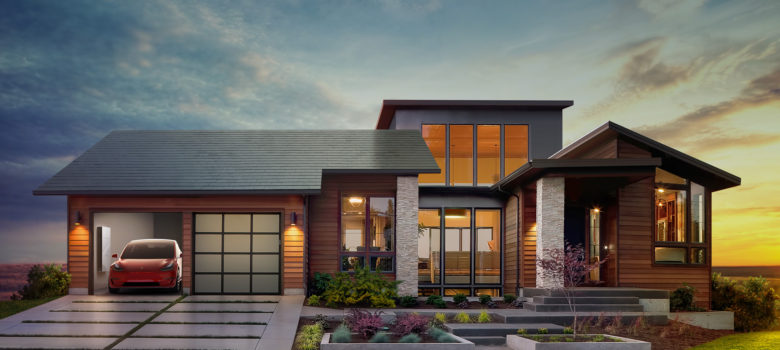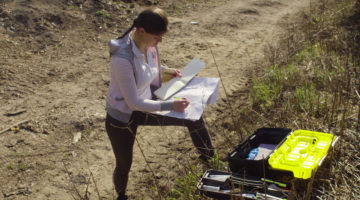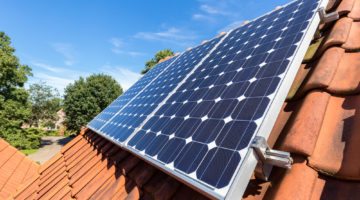
UPDATE: The Feed-In Tariff is now closed for new applications. To find out about the new scheme designed to replace it, click here.
Solar panels are now an affordable way to reduce your demand on the electric grid by producing your own electricity. That is without even taking into account the Feed-in Tariff, which pays you for every unit of electricity created, regardless of whether you use it in the home or sell it back to the grid.
How big a system?
With a 3.5kw system now costing about £6,500 and annual returns of £800 plus, getting solar PV panels installed really is an attractive investment opportunity.
The key to making the numbers work though is maximising the number of panels you can squeeze onto your roof, because regardless of the size of system, you are still going to need things like inverters and cabling to run through the home, so the actual cost of adding an extra panel is not really going to add that much to the final cost of the system.
Most solar panels are 250 watts; therefore to get a 3.5kW (or 3500 watts) system you would need 14 panels.
250 watt solar PV panels are all pretty much a standardised size – they are around 1.6m x 0.9m and about 5cm thick.
For example the Suntech 250w monocrystalline panel is 1665mm x 991mm x 50mm, whhereas the Sanyo/Panasonic panel is 1610mm x 861mm x 35mm, but broadly speaking they are all in that range. Therefore when sizing your solar PV system we recommend using this to drive your calculations.
With a panel therefore being approximately 1.44m2 in total, to get 14 panels on a roof you need a space of about 20m2. However roof-mounted solar installations must also be more than 30cm away from the external edge of the roof, meaning that actually you will need an even larger space so this needs to be factored in to any roof sizing calculations.
Shading and orientation

Another thing to take into account is shading – essentially if you have a chimney that casts a shadow across the roof at certain times of the day, this will severely diminish the return from the solar system. In this case you should try to position the solar panels out of this shading to maximise the amount of electricity you can create – again this might diminish the amount of roof space you have.
>>> Maximise your solar return! <<<
In terms of calculating the actual roof space that you have, it is relatively simple to do this if you have access to the loft space. Essentially you need to take 3 measurements to do this.
- Measure the height from the highest point of the roof, vertically down to the joists (assuming this is the apex).
- Measure the distance from the apex horizontally to the eaves of the roof at joist level.
- Measure the length of the apex of the roof.
With these 3 numbers, you can use a bit of GCSE maths to calculate the area of your roof.
STEP 1:
A2 + B2 = X2
STEP 2:
Once you calculate X2, you need to square root it – to give you X.
X gives you the distance from the apex down to the edge of the roof.
STEP 3:
C x X = AREA OF ROOF
Multiplying C by X will give the area of roof space available. You also need to deduct the 30cm around the edge of the roof on which the panels cannot be fitted – this area will depend on the type of property – detached, terraced etc.
Flat roofs
If you have a flat roof, the panels will usually be mounted at an angle to maximise efficiency. While panels can be situated right next to each in a row, care must be taken to position them in a place where they don’t cast shadows on the row behind or in front.
Size of system versus roof space
| Size of system | No. of panels | Panel area (m2) | Roof area required (m2) |
| 2.50kW | 10 | 14.4 | 19.4 |
| 2.75kW | 11 | 15.8 | 21.2 |
| 3.00kW | 12 | 17.3 | 22.9 |
| 3.25kW | 13 | 18.7 | 24.6 |
| 3.50kW | 14 | 20.2 | 26.4 |
| 3.75kW | 15 | 21.6 | 28.1 |
| 4.00kW | 16 | 23.0 | 29.8 |
Installing Solar PV
Are you thinking about installing a solar PV system at home? We have scoured the country for the best tradespeople, so that we can make sure we only recommend those we really trust.
If you would like us to find you a local installer to help install a solar PV system in your home, just fill in the form below and we will be in touch shortly!













I have recently started doing surveys for solar panels and would just like some tips on the drawing and how many panels I put on the roof
Hi Paul,
Simply work out the size of the roof and then the size of the panels and divide one by the other – remember that you will need to leave a small perimeter of roof uncovered by the solar panels (normally in excess of 30cm).
What width must be left between a solar panel installation and a neighbouring terraced property.\? Does the 300mm edge of roof apply?
having now solar panels for a couple off years I can say with out doubt they are a terrific investment our bills have come down from over £1200 per year elec. and gas down to £600 and the FIT payments are keeping the return on investments ok. the down sides are pigeons who think you have put up a high rise for them. so make sure your installers protect the panels from bird nesting under them. and make sure your house insurance covers them for accidental damage as the insurance you may get from your installers only cover you for breakdown.
I was thinking of having panels fitted and have a south facing roof, I also have a single storey extension which also has a south facing roof would it be helpful to utilise both for panels or should I just stick to having them on the main roof?
If you have a flat roof pending on the size you can have panels fitted also they would be mounted on lightweight angled blocks and the pv panels are placed on tracking systems.being double tracks.
Hi Helen,
Our advice would always be to install as many as possible – the solar panels themselves aren’t really that expensive, so the more you install, the bigger your FIT payments and the more electricity you will produce that can be used in the home.
I’m considering panels on a south-facing garage roof, and could get around 9 on it. Could I use a solar power diverter to use the output to charge an electric car and would the output be anywhere near sufficient?
Really a very good information not only for do it yourself geeks but also for those who do not be cheated by turn key agents.
Thanks.
YOU DO NOT HAVE TO GO INTO THE LOFT TO WORK OUT THE AREA OF THE ROOF, MEASURE THE LENGTH OF YOUR PLACE IF YOU HAVE CONCRETE TILES EACH ONE IS 300MM SO 10*300MM= 3MTRS AS EACH PANEL IS JUST OVER 1MTR IN LENGTH SO YOU COULD HAVE 16 PANELS ON ONE ROOF PENDING ON THE LENGTH
STEP 3:
Can you give some explanation from this equation that you gave :
“C x X = AREA OF ROOF
Multiplying C by X will give the area of roof space available” What is C stands for in the calculation area of roof above?